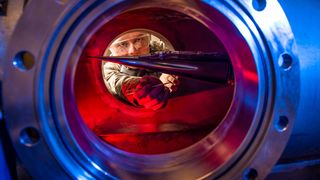Key takeaways
- The relationship between deterrence and cooperation on defence science and technology between Australia and the United States is often implied but rarely explained. At best this is a missed opportunity; at worst, it is a vulnerability that courts misperception.
- Australia and the United States can improve deterrence in the Indo-Pacific by sharing more defence science and technology. If well-executed, this kind of cooperation can help build the capability, capacity, and credibility that deter adversaries and assure allies.
- Sharing defence science and technology is risky, which makes it a “costly signal” that can credibly communicate commitment and resolve. Australia and the United States risk having their shared knowledge and tools captured, exploited, or turned against them in an uncertain future. Accepting these risks requires trust that is hard to fake and credible as a result.
- There are tensions between improving deterrence through this kind of cooperation and catering to special interests, such as jobs and profit. There are also shortfalls in the strategic communications needed to bolster deterrence through shared science and technology.
- Australia and the United States can reap greater returns on their investments in shared science and technology by focusing more on their deterrent objectives, communicating more, and exchanging more people involved in research, development, and acquisition on both sides of the Pacific.

Introduction
The American concept of integrated deterrence places heavy emphasis on cooperation with allies such as Australia. It also emphasises scientific and technological innovation, as US Secretary of Defense Lloyd Austin described at the Global Emerging Technology Summit of the National Security Commission on Artificial Intelligence (AI) in July 2021. The venue was telling. “Integrated deterrence means working closely with our friends and partners,” according to Austin, “and it means investing in cutting-edge capabilities for the future.”1
Similarly, at the Shangri-La Dialogue in June 2022, Austin highlighted alliances for sharing defence science and technology. “AUKUS won’t just deliver nuclear-powered submarines,” he argued, referring to the security agreement between Australia, the United Kingdom, and the United States. “It holds out the promise of progress across a range of emerging tech areas that can bolster our deterrence, from AI to hypersonics.”2
Unstated is how cooperating with allies on defence science and technology will bolster deterrence, integrated or otherwise. This is a missed opportunity. If mismanaged, it is also a vulnerability that potential adversaries can exploit. As appealing as cooperation may appear on the face of it, the stakes of competition with China are too high and the demands on scarce resources are too great for the strategic rationale to remain unspoken or unexamined.

To help address this gap, this report examines defence science and technology cooperation through the lens of deterrence. This kind of cooperation can help the United States and Australia build deterrent capability and capacity. While underappreciated, it can also help communicate the credibility at the heart of deterrence, including the issuance of credible threats. There are important risks, tensions, and shortfalls to consider. Based on this analysis, I provide several policy recommendations for how the United States and Australia can share science and technology to strengthen their deterrence strategy in the Indo-Pacific.
Defence science and technology cooperation
Defence science and technology are the knowledge and tools used to advance national security. As instruments of military power and influence, their primary purpose is national security for the public good — not the pursuit of knowledge for its own sake or products for profit. In this context, the line between “basic” and “applied” research can blur. Similarly, scientific research does not always precede technological development. The defence science and technology enterprise must create, test, protect, and acquire new expertise and equipment to deter, defend against, and win in armed conflict.
In the United States, this enterprise includes numerous agencies inside each Military Service and the Department of Defense (DOD). Examples include the Air Force Research Laboratory, Army xTech, and the Defense Advanced Research Projects Agency (DARPA), among many other laboratories, research centres, and test facilities. In total, the DOD spends more than US$120 billion per year on research, development, testing, and evaluation, including more than US$15 billion for early-stage science and technology. Moreover, the DOD is only part of a larger ecosystem that spans academia and industry. Partners include Federally Funded Research and Development Centers, University Affiliated Research Centers, other colleges and universities, non-profit organisations (e.g., SOFWERX), and defence contractors that range from startups and small businesses to multinational corporations.
Once scientific and technical knowledge are shared, they are difficult if not impossible to claw back.
Understandably, the defence science and technology enterprise and associated ecosystem are smaller in Australia. The Defence Science and Technology Group (DSTG) is the lead agency for scientific advice and solutions inside of the Australian Department of Defence, in support of the Australian Defence Force. With an annual budget of more than $400 million, DSTG employs more than 2000 scientists, engineers and other staff.3 In addition, the Australian Defence Science and Universities Network helps connect DSTG to the innovation ecosystem in academia and industry, which conduct most of the research and development in the country.4 A new Advanced Strategic Research Agency has also been proposed, modelled on DARPA in the United States.5
For both the United States and Australia, cooperation with allies is a common theme in their plans to pursue defence science and technology. Australia’s Defence Science and Technology Strategy 2030 highlights The Technical Cooperation Program (TTCP) in the Five Eyes community, as well as bilateral cooperation with the United States and the United Kingdom.6 The United States also highlights the TTCP, as well as cooperation with the NATO science and technology community.7 Moving forward, AUKUS stands to feature prominently in cooperation between Australia, the United Kingdom, and the United States.
There are several ways to cooperate on defence science and technology. For instance, some states share technical data and documents with foreign militaries. Some swap scientists, engineers and technicians. Through Memoranda of Understanding and Material Transfer Agreements, some also share laboratory, testing, and manufacturing equipment, as well as hardware and software ranging from component parts and experimental prototypes to complete weapon systems.
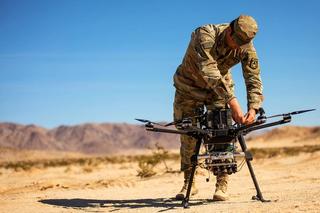
It is important to note that this kind of cooperation differs from other types of security assistance, such as intelligence sharing, military training and arms transfers. Its value is more persistent, as theorised by American political scientist Erik Sand.8 Once scientific and technical knowledge are shared, they are difficult if not impossible to claw back. When it comes to intelligence sharing and military training, by contrast, the tactical and operational information provided tends to have a shorter shelf life, so their utility tends to fade without continued cooperation. The utility of arms transfers may last longer, but finished weapons still require maintenance and support that can be withheld, which potentially limits their operational lifespan.
The utility of shared science and technology can last longer, so much so that it could outlast the partnership. This is a risk, even for allies as close as the United States and Australia. Sharing the technology needed to build advanced weapons is risky because the same weapons and countermeasures could — in theory — one day be turned against you, either by accident or design.
Because international relations are uncertain, a friend today could become an enemy tomorrow. Even as an ally, a friend could mistakenly slip and spill secret technology that was shared with them. For similar reasons, sharing the science used to create new weapons is a risky gamble as well.
AUKUS is remarkable because the United States plans to share technology with Australia that it has only ever shared with the United Kingdom; even in that case, the US Congress took more than a decade to amend the Atomic Energy Act of 1946 and allow for shared nuclear research.
Why take the risk? Some evidence suggests that states rarely do. For instance, in the case of defence cooperation between the United States and India, Sand argues that “despite high-level biannual talks, and multiple high-level status designations, little real technology sharing has occurred.”9 Indeed, AUKUS is remarkable because the United States plans to share technology with Australia that it has only ever shared with the United Kingdom; even in that case, the US Congress took more than a decade to amend the Atomic Energy Act of 1946 and allow for shared nuclear research.10
Rare as such risk-taking may be, it can make sense in the face of a significant threat, such as strategic competition with the People’s Republic of China (PRC). Defence science and technology are central to this multi-domain competition and the fear of deterrence failure in the Indo-Pacific. It is dangerous to assume that the United States still enjoys technological superiority, long seen as “a principal characteristic” of its military advantage and “a powerful contributor to deterrence.”11 Cutting-edge research and development are now available worldwide. Much of this work is private and driven by commercial markets. While these markets may not prioritise national security, they still create knowledge and tools that have military applications. With access to global markets and top talent, the PRC can now rival many of the advanced capabilities that the United States and Australia have in the region.
Increased cooperation on defence science and technology offers three main benefits that could bolster deterrence against aggression and coercion by the PRC. First, it could help the United States and Australia build military capability and, ideally, interoperability for joint operations if not interchangeable forces. Second, it could build scientific and technical capacity, traditionally interpreted in terms of more jobs and industry but increasingly understood in terms of national resilience. Third, it could build credibility as a “costly signal” to allies and adversaries. I explain these benefits below, along with important risks, tensions and shortfalls associated with each.
Building capability
The most straightforward benefit of defence science and technology cooperation is that, by working together, partners can build new capabilities that they could not create on their own. For the United States, this benefit is more attractive now than at any other time since the Second World War. The United States remains a science and technology powerhouse — but it is not the only one. The United States cannot go it alone and safely assume that it will lead the pack. Cooperation that was once nice to have is increasingly necessary in order to remain competitive with dual-use technologies such as semiconductors and 5G. While the benefits of defence cooperation are not new to Australia, the stakes have grown. In some worst-case scenarios, if China proves to be aggressive, then its military could overwhelm Australia or extract painful concessions.
Capabilities are necessary — but not sufficient — for any deterrence strategy. Granted, military forces are not the only relevant capabilities. Integrated deterrence seeks to broaden the range of capabilities considered to include other instruments of national power, such as diplomacy and economic sanctions. However, military or otherwise, the underlying logic is similar. Deterrence depends on threats. These threats are based on either the capability to reduce the expected benefit of aggression relative to restraint (i.e., deterrence by denial and resilience) or the capability to hurt an adversary so much from aggression that it is not worth their effort (i.e., deterrence by punishment).
Technological capabilities
Whether for denial or punishment, sharing technology can bolster deterrence by providing the United States and Australia with more advanced capabilities. “To deter aggression,” according to the US 2022 National Defense Strategy (NDS), “we will develop new capabilities, including long-range strike, undersea, hypersonic, and autonomous systems.” It is no surprise that these are the same military technologies the United States plans to co-develop with Australia.12
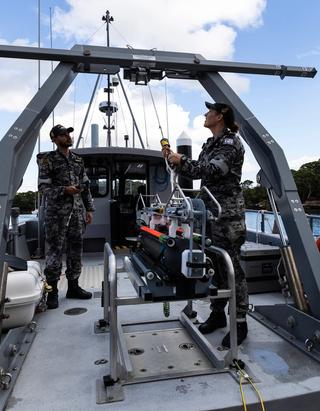
The new capabilities developed through technology cooperation can support each state’s deterrent posture. For example, Australia can use US contributions to its Guided Weapon and Explosive Ordinance enterprise to help deter aggression.13 Consistent with the logic of denial, the missiles, bombs and rocket systems developed through this $1 billion initiative will have a deterrent effect if these capabilities ward off attacks against Australia, like the spikes on an echidna.14
Co-developed technologies can also support deterrence through “collective cost imposition,” as highlighted by the 2022 NDS.15 Sharing technology does not guarantee a collective response in every contingency. Given how persistent it can be, extensive sharing is better suited to extended deterrence of existential threats rather than a guarantee of allied support in wars of choice (e.g., the 2003 Iraq War). Nevertheless, in the context of deterrence, sharing can help “increase the expectation that aggression will be met with a collective response,” as I discuss later.16 To the extent that technology sharing increases Australian and US capabilities, it increases the punishment that an adversary could suffer if they attack either ally.
Scientific capabilities
Sharing science can also generate capabilities that bolster deterrence, although the time horizons are longer. While science is many things (e.g., a kind of knowledge, methodology and profession), it is not the same as an operational weapon system. For instance, Australia probably has the scientific know-how needed to build nuclear weapons, as do Japan and South Korea. Yet that knowledge does not equate to a nuclear arsenal.
It takes time and effort to turn scientific discoveries into weapon systems or other military capabilities. The same is true for translating new social science on deterrence into better policies and strategies. As a result, the potential benefits that science offers for future capabilities are weak deterrents in the present and near term. They are also unlikely to influence crisis stability (i.e., immediate deterrence). Said another way, the prospect that scientific research may help arm the People’s Liberation Army with powerful quantum computers or strong AI in 2045 is unlikely to sway brinkmanship and bargaining if a crisis emerges over Taiwan in 2025.
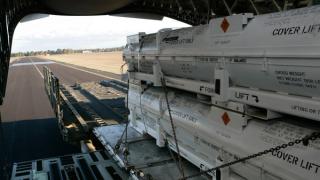
That said, expectations about future capabilities can influence perceptions of threats and opportunities in the present.17 Fear of surprise or falling behind can be influential as well since adversaries can never be certain about what scientific achievements have been revealed or concealed and for how long.18 To the extent that science thrives on the free exchange of ideas, cooperation that increases information sharing between the United States and Australia can fuel progress — especially inside the sometimes closed or classified world of military research. Furthermore, while science is not the same as the capabilities used for deterrence, they are related. For example, “if we want to truly be interoperable [with Australia] during the fight,” argues Stephen Conley at US Army Futures Command, “then the work, the planning, the discovery and delivery has to begin in our science and technology labs.”19
Risks
Despite the potential benefits of sharing defence science and technology to build deterrent capabilities, several risks remain. First, these capabilities could be turned against you — not only if the relationship sours, but also if your friends accidentally leak secrets or fall victim to malign influence. States are very reluctant to accept these risks. Their heavy emphasis on security classification and technology protection is often symptomatic of this underlying issue.20 As a result, there are significant barriers to sharing.
“In the early Cold War years,” for instance, “the United States cut off most technical disclosure to Australia during and after a scandal which revealed communist agents had penetrated the Australian government.”21 More recently, leaked secrets about the Aegis combat system strained defence cooperation between the United States and Japan.22 And after classified research on cyber vulnerabilities reportedly leaked from the US National Security Agency, “American officials had to explain to close allies… how cyberweapons developed at Fort Meade in Maryland came to be used against them.”23 Technology protection and other safeguards work best when coordinated with allies, but even the closest of allies rarely enjoy total confidence in their friends.24
Deterrence is not the only possible application of shared science and technology. Aggression is another. Given the uncertainty inherent in international relations, potential adversaries may be unable to tell the difference.
A second and related risk is that strengths often come with weaknesses.25 It is difficult to share detailed knowledge about advanced capabilities without also sharing knowledge about potential countermeasures to those capabilities and, similarly, one’s own vulnerabilities. For example, joint research and development of military AI by the United States and Australia stands to include information sharing about the algorithms and training data, which could in turn be flipped and used to inform adversarial AI.
Third, deterrence is not the only possible application of shared science and technology. Aggression is another. Given the uncertainty inherent in international relations, potential adversaries may be unable to tell the difference. For instance, Xi Jinping clearly wants China “aiming at the frontier of global military scientific and technological developments.”26 It is reasonable to expect that he sees cooperation between the United States and Australia on defence science and technology as a threat. Less clear, however, is whether Xi interprets this threat as a deterrent, which discourages aggression in the Indo-Pacific, or as a source of increased instability.27 It is possible that cooperation intended to deter could instead fuel arms races, first-strike incentives and escalatory spirals.
Building capacity
When thinking about science and technology, there is a tendency to fixate on capability, namely, whether you can achieve something, such as fly at hypersonic speeds or use qubits for quantum computation. However, capacity is also important for deterrence, namely: how much of it can you do at any given time?
Questions about the capacity to produce military force at scale are significant when it comes to deterring China because quantity can sometimes overwhelm quality. Consider the Long-Range Anti-Ship Missile (LRASM), an advanced technology developed in part by DARPA.28 Hypothetically, dozens of these missiles may be insufficient to deter a determined adversary armed with hundreds of warships.29 However, if the United States and Australia gain the capacity to build — and buy — hundreds of LRASMs by working together, then the decision calculus of even a highly motivated adversary may shift away from naval aggression.30
Questions about the capacity to produce military force at scale are significant when it comes to deterring China because quantity can sometimes overwhelm quality.
Cooperation on defence science and technology can help build this kind of capacity. To do so, however, both the United States and Australia must navigate tensions between their collective capacity to deter potential adversaries and their self-interests in economic prosperity at home.
The market for defence-specific technology is small, at least when compared with global consumer markets such as electronics or pharmaceuticals. In theory, cooperation can increase market size, allowing the United States to export more defence technology to Australia and vice versa. This larger market can help justify investment into the industrial capacity needed to produce shared technology — for denial and resilience, or punishment — at speed and scale. There are other potential advantages as well, distinct from deterrence per se. A larger market can drive down the cost of production per unit (e.g., more than US$200 million for the first F-35As dropped to less than US$80 million per plane in Lot 14). These economies of scale are attractive given the large sunk costs typically required to research and develop new technology. A larger market can also support more jobs in the defence industry, and those jobs employ potential voters.
Scale matters for science too, and cooperation can increase the stock of knowledge applicable to deterrence in the Indo-Pacific. The amount of scientific research on strategic deterrence waned after the Cold War. Because the production of defence science is closely linked to education at research universities and war colleges, this shift has had knock-on effects for military leaders and civilian policymakers, some of whom are now less familiar with deterrence than their predecessors. This relationship is complicated, and neither the creation nor dissemination of new knowledge is inevitable. Nevertheless, Australia and the United States can design how they cooperate with this intent (e.g., through directed research, graduate coursework and workforce development), growing the stock of knowledge available and the number of people familiar with it.
Both science and technology also involve tacit knowledge, which is sensitive to scale and at least indirectly applicable to deterrence. Tacit knowledge is learned by doing and “embodied in people rather than words, equations, or diagrams.”31 It is transmitted person-to-person. In contrast, explicit knowledge can be recorded or written down, making it easier to share without interpersonal relationships. The more that Australians and Americans work side-by-side through initiatives such as the Engineer and Scientist Exchange Program (ESEP), the more tacit knowledge and skill they can share with each other.32 The more that scientists and engineers work together to enhance deterrence, the greater the relevant capacity for science and technology across the Alliance, all else being equal.
Tensions
Alliance capacity is not the same thing as sovereign capacity. Similarly, the economic costs and benefits of defence cooperation are not equally distributed, either between allies or within them. Australia and the United States still compete with each other economically and trade with China during peacetime, which can influence how they invest in the scientific and technical capacity to deter war.
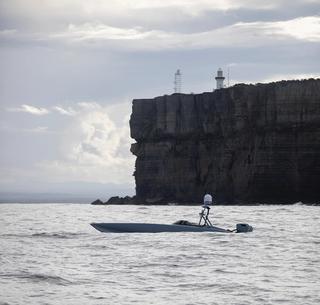
Tensions between defence cooperation and economic competition sometimes get swept under the rug. For instance, the Biden administration argues that its “technology strategy will enable the United States and like-minded democracies to work together… All while delivering new jobs and security for the American people and our allies and partners.”33 Scientists also want jobs, and those who benefit from defence cooperation make similar arguments. “Working with the US Air Force and other US military laboratories has been a boon for my research interests,” according to one Australian Research Council Future Fellow, which “shows how a strong international collaboration can enhance and benefit each country’s interests.”34
However, these benefits do not negate tensions between special interests in jobs and profit versus the national interest in deterrence, nor tensions between benefit versus burden sharing across the alliance. For instance, Australia was nominally included in the United States’ National Technology Industrial Base in 2016. Australian Senator Linda Reynolds CSC later argued that resulting “industry cooperation will be a critical component and a very potent combined effect, which we will need for deterrence purposes.”35 To date, however, restrictions such as the International Trafficking in Arms Regulations (ITAR) and Buy American Act still frustrate the cooperation supposedly needed for deterrence.36
Managing these tensions is a political choice, regardless of the scientific or technical terms of the debate. When it comes to choices between protectionism and deterrence, policies that might build allied capacity to deter common adversaries do not always win.
Building credibility
Along with capability and capacity, another potential benefit of defence science and technology cooperation is that it is a costly signal, which can make deterrence more credible. Deterrence is difficult in part because it depends on adversaries believing your threats, namely, what you say will happen if they attack. Talk is cheap in international relations. States lie all the time, especially to their adversaries. If your adversaries are not convinced that they will be denied the benefits of aggression or punished severely for it, then they may not be deterred. How do you convince an adversary — who expects you to lie — that you honestly intend to carry out your threats if push comes to shove?
Unlike cheap talk, a costly signal is an action that can credibly reveal information about your true intentions. Because it is costly, you are unlikely to pay the price unless the message is sincere. In the case of deterrence, costly signals help communicate resolve and thereby mitigate against empty threats. In the case of extended deterrence, sharing defence science and technology can send a costly signal that credibly communicates a state’s resolve to carry out deterrent threats to protect its ally.
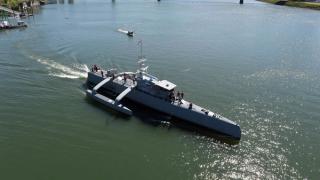
To be clear, while research and development are expensive, that is not the “cost” in question here. Rather, the costly signal is when you accept the risks of sharing scientific and technical knowledge about your capabilities and associated vulnerabilities with an ally. Remember that knowledge and tools are difficult if not impossible to claw back. As a result, the deterrent threats you make to protect that ally are more credible because they can impose costs back on you — directly or indirectly, using shared science and technology — if you fail to deny or punish aggression against them. You have more skin in the game.
China is unlikely to see this as a bluff. Imagine that the United States and Australia engage in extensive cooperation on defence science and technology, but then Australia is attacked, and the United States fails to carry out its deterrent threats against the aggressor. The United States would face more than just the audience costs of having reneged on its public promise to a collective response. It would also risk having its shared knowledge and tools captured, exploited or otherwise turned against it as a result of abandoning Australia.
The more that allies share, the greater their stake in each other’s survival and resilience to coercion, and the more credible extended deterrence will likely appear to potential adversaries.
Of course, this risk is not the only reason why US threats to fight on Australia’s behalf are credible. Shared science and technology correlate with other kinds of defence integration that contribute to deterrence. Nevertheless, the more that allies share, the greater their stake in each other’s survival and resilience to coercion, and the more credible extended deterrence will likely appear to potential adversaries.
And adversaries are not the only audience. Allies are also likely to be (re)assured that cooperation on defence science and technology is a credible commitment to collective security because it is “diplomacy of deeds.”37 Admittedly, these deeds are credible in part because they are risky, which makes them difficult to accomplish. For instance, in addition to regulatory restrictions such as ITAR, there are significant cultural and bureaucratic barriers to cooperation, including the military’s penchant for secrecy and fears of PRC influence that limit information sharing between the United States and Australia.38 Overcoming these barriers is not easy. Accepting the risk of doing so requires considerable trust. On the upside, this degree of trust is hard to fake, so deeds that require it can credibly assure allies that their relationship and shared commitments to extended deterrence are strong.
Shortfalls
You must do what you say, and say what you do, to build credibility with defence science and technology cooperation. Token gestures are not very credible. Despite perennial talk about “allies and partners,” for instance, it is an open question how much limited cooperation between the United States and Australia contributed to deterrence in the past. Even celebrated examples of bilateral collaboration, “such as the electronic warfare suite on the EA-18G Growler, the Nulka active missile decoy and Mk48 torpedo,” do not indicate much risk acceptance.39 If you say this kind of cooperation is important, then it pays to follow through.
It also pays to say what you are doing, and why. There is noise in every political signal, even among allies. The message that Washington intends to send with defence cooperation may not be how it is received in Canberra, let alone Beijing. Although some attributes of shared science and technology are observable, what they mean is still open to interpretation.
Despite perennial talk about “allies and partners,” for instance, it is an open question how much limited cooperation between the United States and Australia contributed to deterrence in the past.
Consider the Southern Cross Integrated Flight Research Experiment (SCIFiRE) and its predecessor, the Hypersonic International Flight Research Experimentation (HIFiRE) program. Together, these programs represent more than US$100 million and 15 years of collaboration between Australia and the United States on hypersonic science and technology.40 Rather than deter or reassure, however, one criticism of hypersonic weapons is that their speed, range and manoeuvrability “may decrease America’s need for forward posture and basing around the world,” thereby reducing “the presence of US forces to deter aggression from regional powers and adversaries.”41 This could amount to technology-enabled abandonment. An alternative fear is entrapment, whereby the speed, range, and manoeuvrability of hypersonics may undermine regional stability and drag Australia into war by escalating conflict between the United States and China. In this and other cases, it is not self-evident how the knowledge and tools created through defence cooperation will be interpreted, even among friends.
In communications, repeating a signal can reduce the errors caused by noise.42 In the past, however, political signals and noise were rarely considered in US or Australian defence science and technology strategies.43 Overlooked was the basic notion that cooperation — including the capabilities and capacities it can create — is intended to credibly communicate deterrent threats to adversaries and assurances to allies. Perhaps the scientists and engineers who helped write these strategies overlooked communication because they assumed that their work speaks for itself. It does not.
At best, failure to repeatedly communicate the scope and purpose of defence cooperation is a missed opportunity to build credibility. At worst, it can fuel misperceptions and provide adversaries with free reign to spin alternative narratives to their advantage. AUKUS provides fertile ground for PRC conspiracy theories, for instance.44 Washington and Canberra do not know enough about perceptions and decision-making in Beijing to safely assume that further communication is not required.
This is not to say that words are more important than deeds when building credibility. But deeds are also open to interpretation. The mere existence of cooperation is insufficient to clearly communicate deterrent intent. The defence science and technology enterprise shares responsibility for how its deeds are interpreted by adversaries and allies. Effective communication is necessary to influence the decision-making at the heart of deterrence.
Policy recommendations
Several policy recommendations flow from this analysis. First, cooperation on defence science and technology is a means to a political end (e.g., deterring the PRC). It is not an end in and of itself. Policymakers should not confuse means with ends. Nor should scientists and engineers.
This kind of cooperation can build capability, capacity, and credibility — all of which Australia and the United States should pursue together. They should also track the successes and failures of collaborative programs such as SCIFiRE and HIFiRE in these terms. While science and technology should be forward-looking, it may be unwise to invest in endless quests for exquisite weapon systems that are unlikely to deliver capability, capacity, or credibility at speed and scale. By keeping deterrence in mind, the logic of denial and punishment can help the DOD and DSTG make hard choices about how to prioritise critical technologies and invest scarce resources (e.g., thinking about resilience for the sake of denial helps clarify why “lethality” is an insufficient indicator of technical performance and utility).
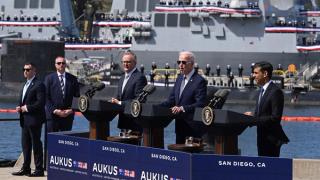
Second, defence science and technology do not speak for themselves. Any strategy about them should address communication with multiple audiences, inside government and beyond. This is particularly true in the context of deterrence. Sharing science and technology can help the United States and Australia signal shared resolve; additional communication can help the PRC receive the message as intended.
“To strengthen deterrence while managing escalation risks,” the 2022 NDS highlights the importance of “working to ensure that messages are conveyed effectively.”45 The defence science and technology enterprise should convey how collaboration on research and development contributes to extended deterrence. Shirking this responsibility risks wasting a costly signal, fuelling misperception, and ceding influence over how research and development are interpreted on the international stage.
Effective communication is also important among allies. If the United States and Australia want to share more defence science and technology, then they should have more candid conversations about how to do so. For instance, they could choose to collaborate on similar research and, by working together, advance the state-of-the-art faster than either would alone (e.g., “let us both work on hypersonics”). Alternatively, each could double down on their comparative advantages and focus on different lines of inquiry (e.g., “you work on quantum science while we do biotechnology”).46 While not mutually exclusive, these are choices with important trade-offs given limited time, money, and talent. These choices should be rigorously analysed, closely coordinated, and then acted upon, here again keeping political objectives such as deterrence and assurance front of mind.
If the United States and Australia want to share more defence science and technology, then they should have more candid conversations about how to do so.
Finally, if the United States and Australia want to share more defence science and technology, then they should exchange more people. Recall that interpersonal relationships are necessary to communicate tacit knowledge. Australia may not be large enough to match the United States person-for-person if scientific and technical exchange programs such as ESEP are drastically expanded. However, reciprocal or not, both can provide more placement opportunities for military and civilian personnel from the other country.
These include placements inside academia and industry, as well as with military innovation and investment organisations that range from the Defense Innovation Unit and Office of Strategic Capital to the Defence Innovation Hub and Next Generation Technologies Fund. They also include placements inside service-level organisations, such as the Office of Naval Research, and opportunities for more Australian and US scientists and engineers to work together at US Strategic Command and US Indo-Pacific Command.
Deterrence is not automatic, as painfully illustrated by the failure to deter Russia’s invasion of Ukraine in 2022, among countless other examples. Cooperation on defence science and technology can help, but its contributions are not automatic either. Political work is required because deterrence is a political objective. Australia and the United States must work harder to integrate defence science and technology cooperation into this objective if they want to help deter aggression in the Indo-Pacific.





